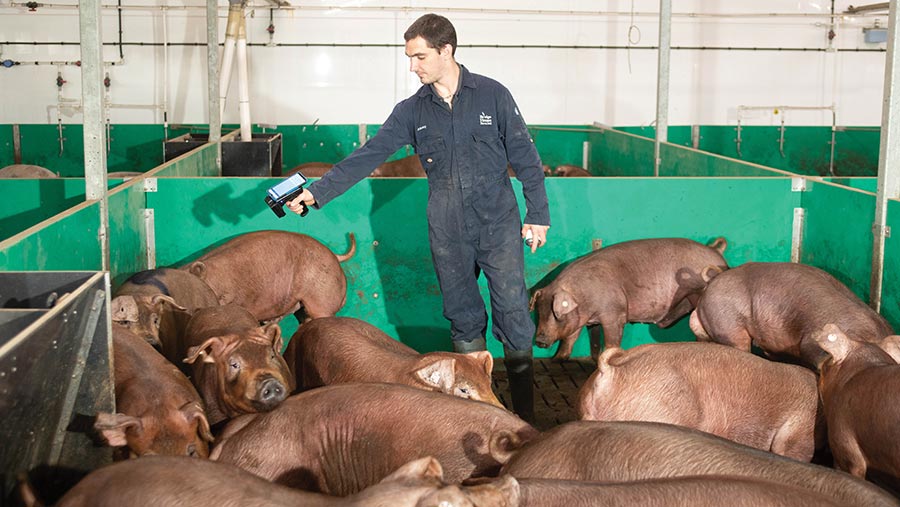10 ways to attract and retain staff in pig industry
 © Tim Scrivener
© Tim Scrivener Recruiting and retaining staff is an ongoing challenge for the pig industry.
However, there are 10 points employers should consider to make themselves more attractive to potential employees, according to Paul Harris, managing director of people consultancy firm Real Success.
Here, he shares his top tips for tackling labour shortages.
1. Reputation
Are you a moaner or a motivator? How you talk about your own farm and industry will have a huge impact on your business reputation. Constantly talking negatively is less likely to make you attractive to potential employees.
See also: Advice on how to build and keep a good farm team
2. Online footprint
Many farm businesses do not have online footprints, such as websites and social media pages. It is important to remember that for most people looking for jobs, the first place they will go is online.
The absence of an online platform can make it difficult for potential staff to find out more information and get a feel for the business.
The minimum a farm should have is an Instagram account and a Facebook page.
3. Advertising
Poor job advertising often leads to poor, or limited, applications.
Be clear on exactly what the position is offering, what kind of experience you require, information about the farm – such as size and location – as well as salary and other benefits.
Most importantly, be positive in tone: you want people to want to work for you.
4. Animal welfare
Well-cared-for animals can help make your business stand out from competitors. For most people, working somewhere where animal welfare is a priority will be key.
5. Housing
While it is not possible for all businesses, providing housing can be a huge incentive to encourage staff. If you can provide it, it must be good quality. Would you be happy with your own family living there? If not, you should not be happy to offer it to staff.
6. Working conditions
Providing clean, functional areas for eating and clean toilet facilities are essential. A lack of this sends a clear message to staff about how much – or how little – you value them.
7. Working hours
We must recognise as an industry that people no longer want to work 60-100 hours a week, every week.
To meet the labour challenges seen in the pig sector, we have to attract people from outside farming, and reducing hours is likely to help that. This does not mean increasing wage bills hugely, but instead having more people working fewer hours.
8. Salary
Salary is a key deciding factor for many employees, so consider if you are competitive and how you stack up against the market average.
But it is not just about monthly payments – can you offer other incentives? This might include additional paid time off or flexibility in working hours, for example.
9. First impressions
Stand at the entrance to your farm and take stock. How would you rate it if you were seeing it for the first time? If it is untidy and run down, it is less likely to inspire potential employees.
It is said that most people decide whether they want to work somewhere within the first three or four seconds of arriving.
10. Training
People often worry about investing money in training staff “in case they leave”. But what if they stay? From a retention perspective, a skilled, highly trained workforce has got to be better for the future of the pig industry.
Paul Harris was a speaker at the recent Pigs Tomorrow conference

